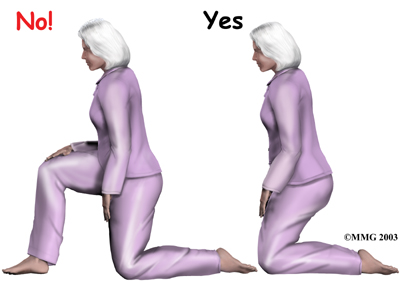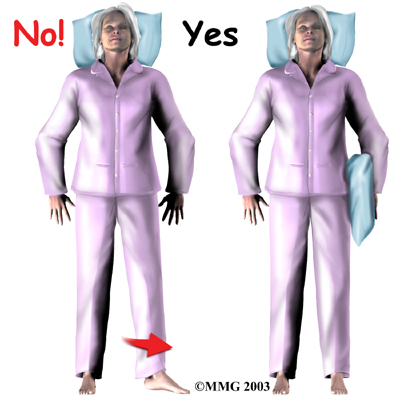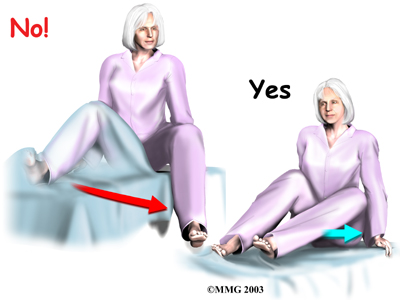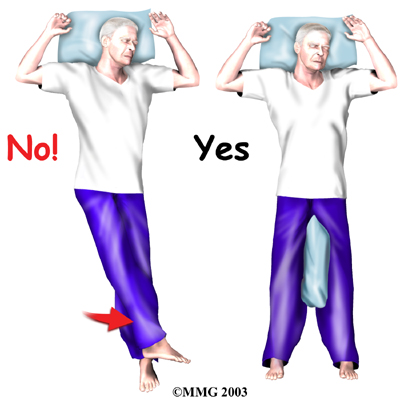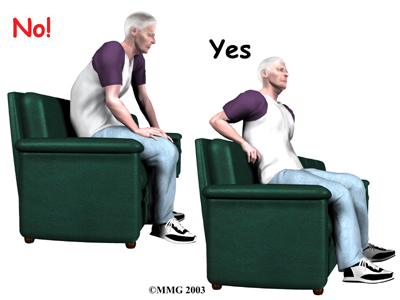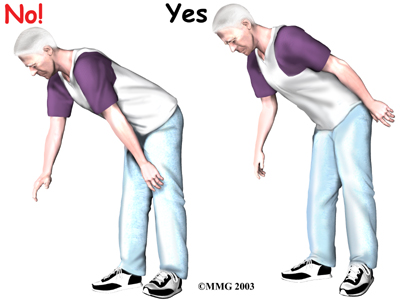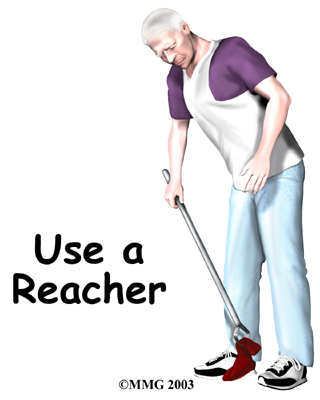|
|
Artificial Hip Dislocation Precautions
IntroductionPhysiotherapy in Regina, Physiotherapy for Hip
Welcome to Alpha Center's patient resource about Artificial Hip Dislocation Precautions. Hip surgeries such as total joint replacement and hemiarthroplasty require the surgeon to open the hip joint capsule. This puts the hip at risk of dislocating after surgery. Patients follow special precautions after surgery about which hip positions and movements need to be avoided to keep the hip from dislocating. While you are in the hospital, your health care team will remind you often about the need to follow these hip precautions. Once you get home, you will have to remember to follow these rules until your surgeon approves motion beyond these limits of movement. This guide will help you understand:
#testimonialslist|kind:all|display:slider|orderby:type|filter_utags_names:Hip Pain|limit:15|heading:Hear from some of our patients who we treated for *Hip Pain*# Hip AnatomyWhich parts of the hip joint are affected by a dislocation? The hip joint is one of the true ball-and-socket joints of the body. Ball and Socket
The hip socket is called the acetabulum and forms a deep cup that surrounds the ball of the upper thighbone, called the femoral head. The ball and socket is surrounded by a soft-tissue enclosure called the joint capsule. Joint Capsule
The hip itself is surrounded by the thick muscles of the buttock on the back of the hip and the upper thigh muscles on the front. Muscles
When the surgeon opens the hip joint capsule on the front edge, the procedure is called an anterior approach. Opening the Hip Joint
Opening the joint from the back part of the joint is called a posterior approach. Related Document: Alpha Center's Guide to Hip Anatomy Hip Anatomy Introduction Rationale for Hip PrecautionsWhy are precautions needed to prevent a hip dislocation? The joint capsule and ligaments keep the ball joint centered in the hip. When these soft tissues are cut during hip surgery, there is a greater risk for the ball to be forced out of the socket and dislocated after surgery while the soft tissues of the hip heal. The hip precautions you'll learn are used to keep your hip in safe positions. To do this, you need to avoid certain movements and positions. In this way, the ball will be less likely to push against the healing tissues and be forced out of the socket. Most surgeons prefer to have you use these precautions for at least six to twelve weeks after surgery until the healing tissues gain strength.
Most patients will have an opportunity to work with Alpha Center physical or occupational therapist before having hip joint surgery. However, patients sometimes require emergency surgery, such as after a hip fracture, and are not able to have preoperative therapy instruction. Our therapist will go over specific precautions with you in the preoperative visit and will drill you often to make sure you practice them at all times for six to 12 weeks after surgery. Your health care team will remind you often about these precautions. They sometimes place a sign by your hospital bed as a reminder. You'll continue to review and use these precautions until your surgeon gives the approval for you to stop using them. General Hip PrecautionsWhat are the precautions I should know and use to keep my hip from dislocating? The positions and movements you'll need to avoid after surgery depend on whether your surgeon opens the joint from the front (anterior approach) or the back (posterior approach). Anterior Approach The main positions and movements to avoid after an anterior approach include bending the hip back, turning your hip and leg out, or spreading your leg outward.
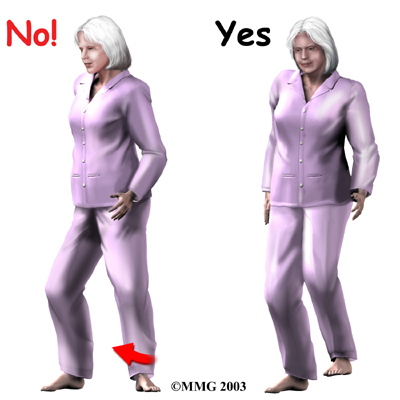
Posterior Approach
The main positions and movements to avoid after a posterior approach include crossing your legs, turning your hip and leg inward, or bending the hip more than 90 degrees.
Also, raising your knee up in bed can cause the hip angle to go past ninety degrees.
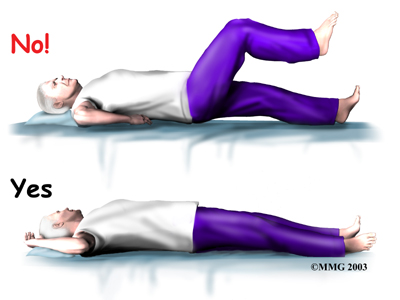 To avoid bending past ninety degrees when sitting in a chair, lean back slightly.
At-Home ConsiderationsWhat arrangements should I consider in my home to help protect my hip from dislocating? You may require special equipment at home to keep your hip in safe positions. Following are ideas for different areas of your home. Bathroom Several items can be used to increase your safety in the bathroom. For instance, a toilet seat can be elevated with a raised commode seat to keep your hip from bending too far when sitting down. Getting on and off the commode may be easier with the help of handrails or grab bars securely fastened near by. For accessing your bathtub or shower, you may need one or more grab bars. For additional safety and comfort, be sure to obtain an adjustable tub or shower bench. When you first try the bench, be sure your knees are positioned slightly lower than your hips. In this way, you'll be sure to keep your hip from bending more than ninety degrees while sitting down. Furniture To prevent your hip from bending beyond ninety degrees, you may need to elevate your couch, chair, or recliner. A good rule of thumb is to have a seat height that is at least twenty inches above the floor. If you find that your furniture is too low, consider using a platform under your chair or couch to raise it to the desired height. Using four-by-four blocks may be helpful, but be sure that the chair or couch is safe and steady before you sit down. Shelves and Cupboards To avoid excessive bending and lifting, arrange your shelves and cupboards with frequently used items at waist to shoulder height. For lighter items on lower shelves, be sure to have your grabber handy to keep from bending over too far at the hip. SummaryIf you are able to see our physiotherapist before surgery, we'll begin going over your hip precautions then. After surgery, our physiotherapist will begin working with you right away and may see you one to three times each day in the hospital until you are safe to go home. You are advised to continue using your hip precautions until your surgeon says you may discontinue following them. Alpha Center provides physiotherapy services in Regina, Physiotherapy. Portions of this document copyright MMG, LLC. |
||||||||||


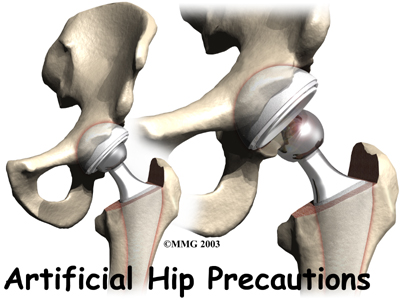
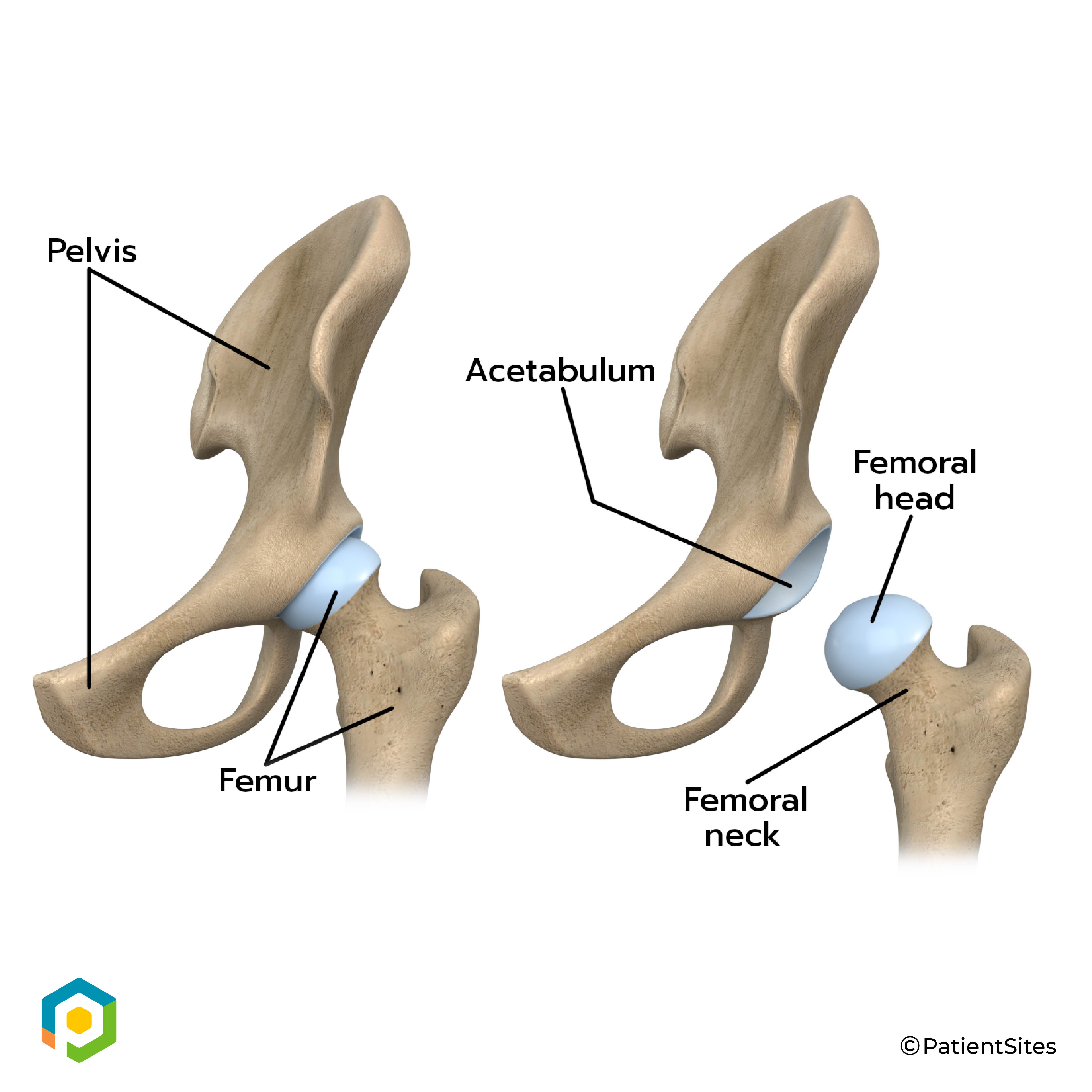
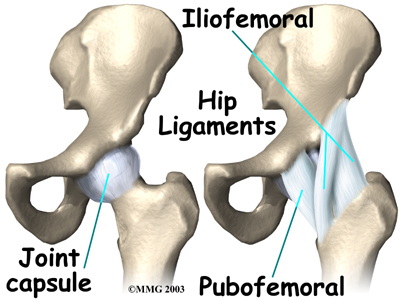
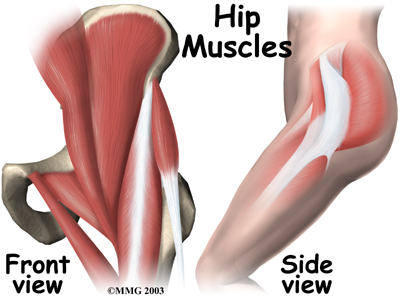
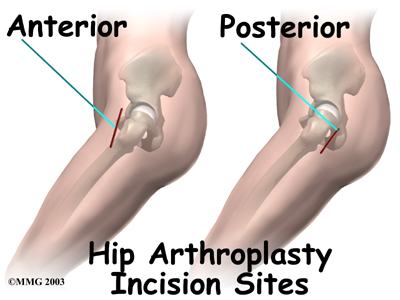
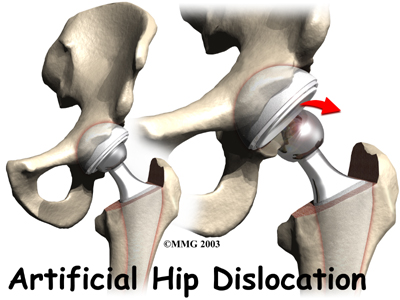 Dislocation
Dislocation 
